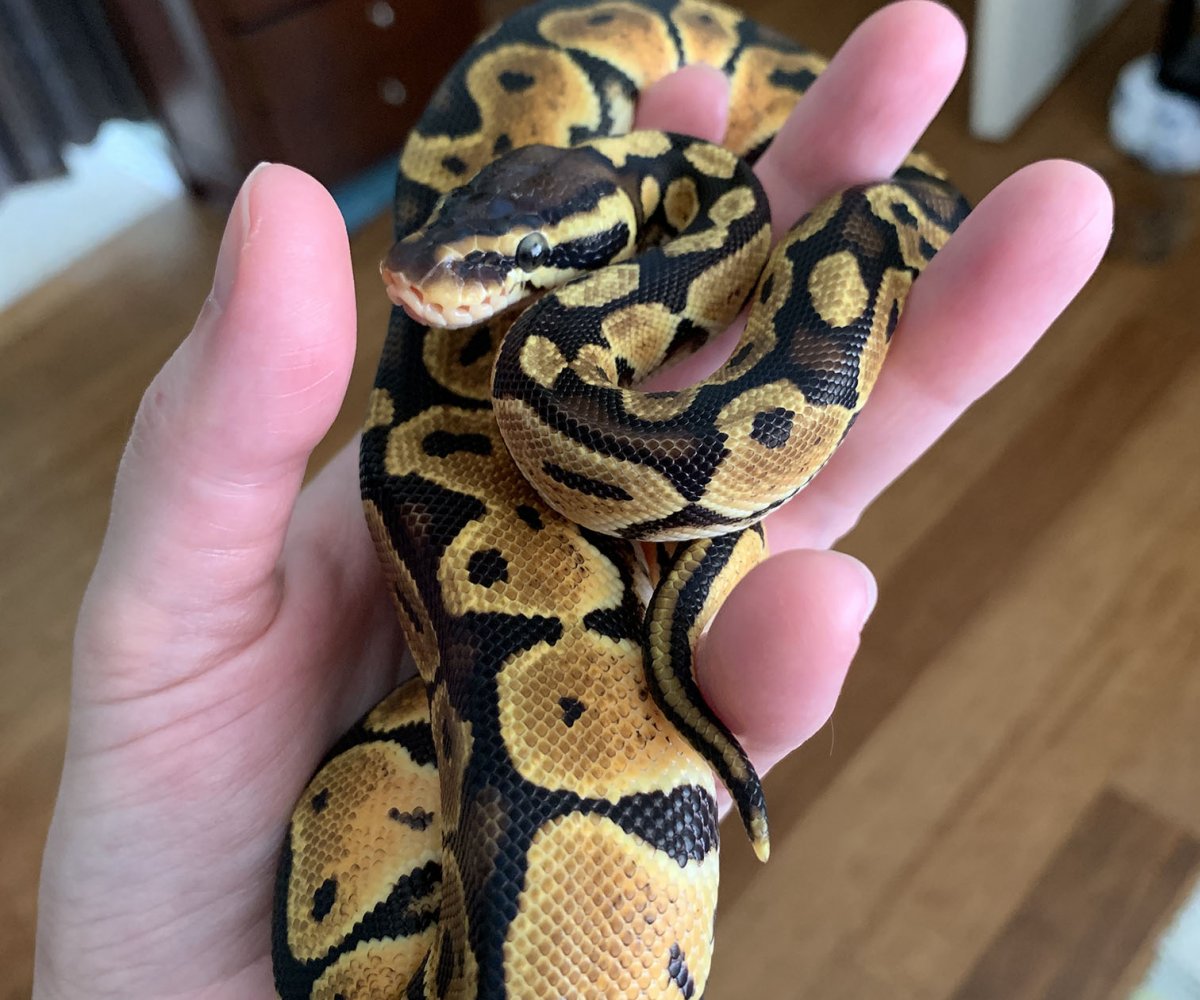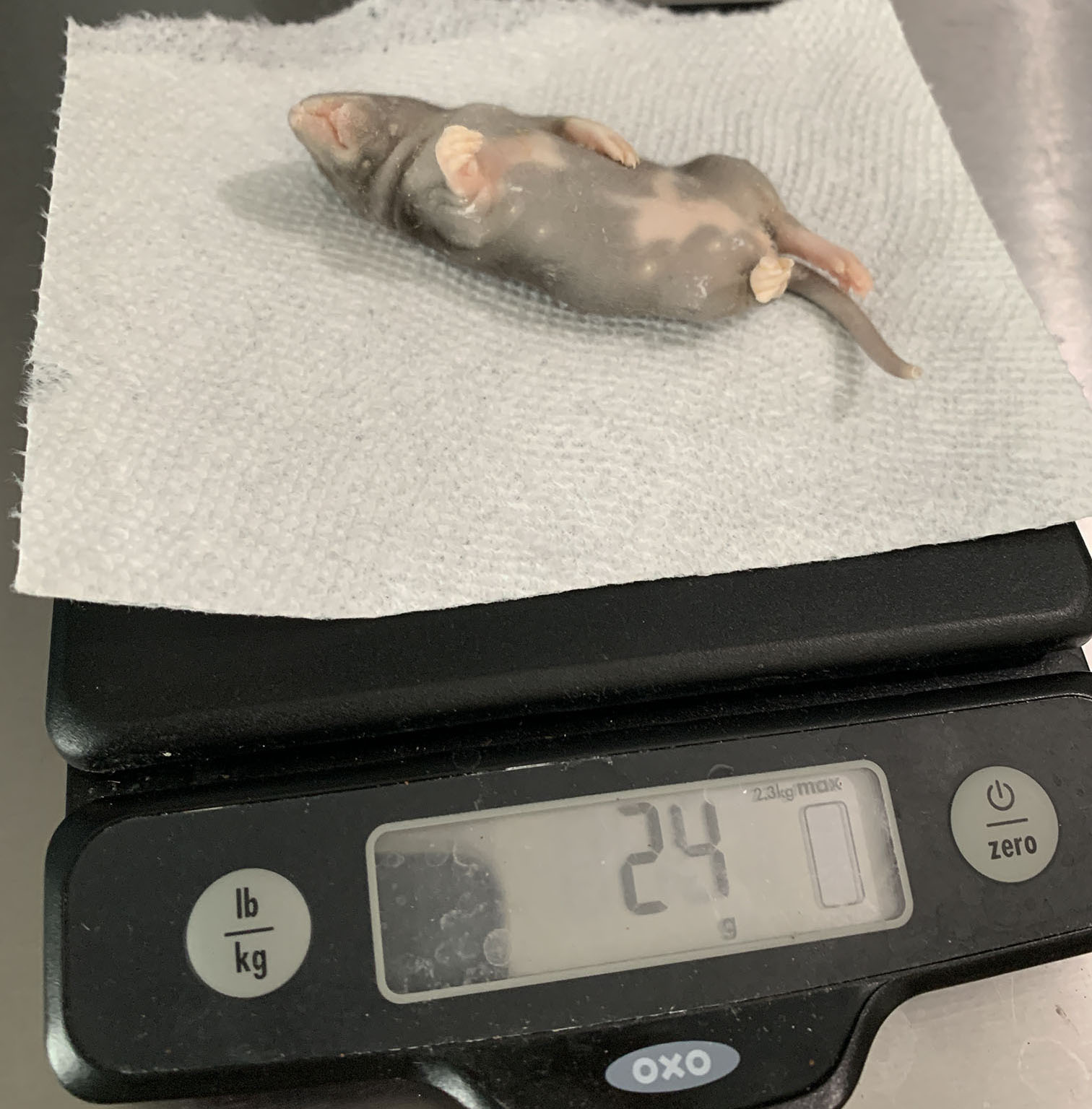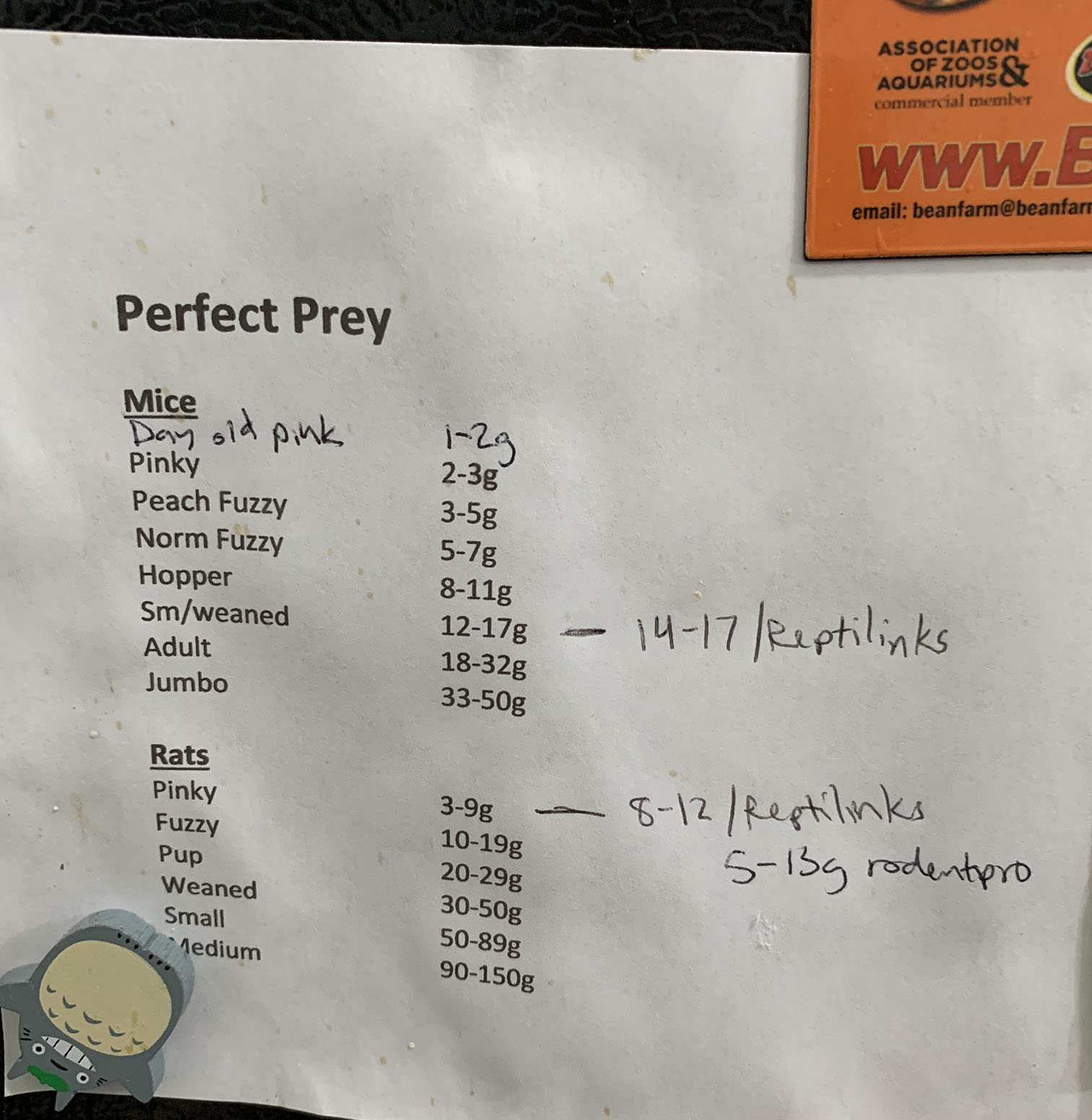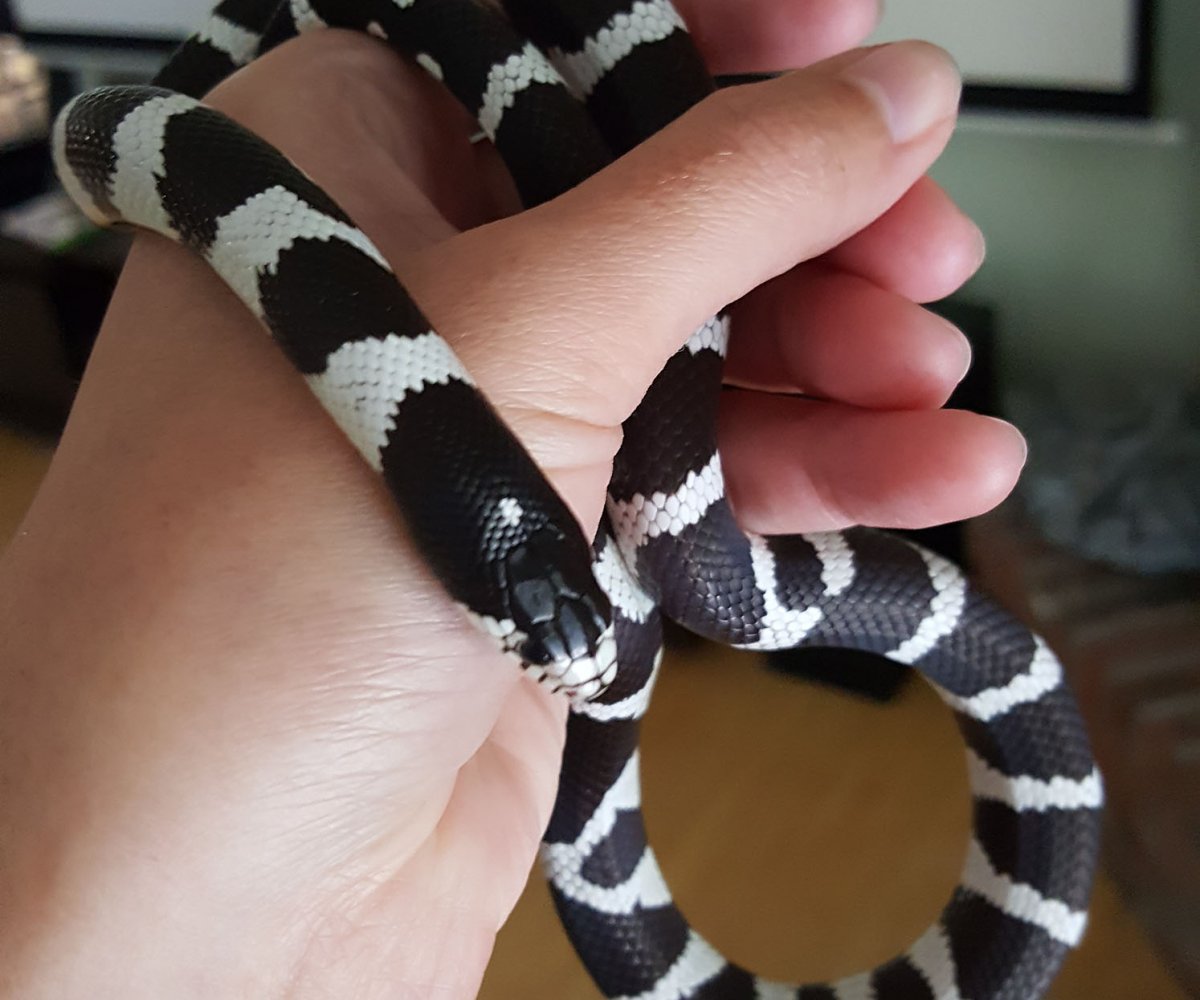How Much to Feed? How Often to Feed?
Generally, a snake should eat an appropriate-sized food item every 7 days. The food size should be about the size of the snake’s widest girth. You can safely go larger than this—up to 1 ½ times the girth of the snake—but do so with care.
There are some variations here—your snake may be slender but very long. Your snake may be in between rodent sizes. Maybe the rodents you have access to aren’t quite the right size. Do you feed a larger meal? A smaller meal more often? Multiple smaller meals?
The really important thing here is to look at the growth and weight of your snake, and to look at the weight of the food item.
The Growing Process
A young snake should be growing and gaining weight. If it is not, and it is an otherwise healthy snake, then you are probably not feeding enough. A fully-grown snake does not need to gain weight. If it becomes overweight, starting to look like a sausage or—yes, even having fat rolls—you are probably feeding too much or too often. These are your indications to adjust your feeding schedule.
For a young, growing snake, we feed an appropriately-sized food item every 7 days. If they are starting to outgrow the food size, we will drop the interval for that same food item to every 6 days and weigh again in a few weeks. When the weight stabilizes, we decrease the interval to every 5 days. Again, we weigh periodically. When the snake stops gaining at this point, we raise the food to the next size bracket and go back to feeding them every 7-10 days, ultimately ending up back at that appropriately-sized food item every 7 days.
For example, a snake is eating a rat pup every 7 days but is starting to outgrow the pup. I would feed her every 6 days for a couple of weeks, then every 5 days. Then, when I am comfortable moving up, I’ll give her a weaned rat every 7-8 days.
Doing the Math
Think about this in terms of grams. If the rat pup is 25 grams, and you feed once a week, you are feeding 25 grams every 7 days. At 5 days a week, now you are feeding 25 grams every 5 days (which is 50 grams every 10 days). Then, you can move up to the next size bracket to a weaned rat at 40 grams every 7 days. The important thing is to increase the grams of food given without doing it too quickly or adding too much at one time.
You don’t necessarily need to stress about weighing each and every rodent on a gram scale before feeding. Most suppliers give a gram weight range for each size they offer. For example, PerfectPrey’s weaned rats range from 30-50 grams. Their small rats range 50-89 grams. I have found that estimating by using the average weight of this range is sufficient. However, you do get a feel for larger or smaller meals by looking at the rodents—some in the bag might be obviously larger or smaller than others (I tend to save the larger ones for the snakes who could stand to put on some extra weight).
Now, question. Can you just move up a food size, from every 7 days on a rat pup to every 7 days on a weaned rat? Sure you can. Can you feed more than one appropriately-sized food item at a time, once a week? Yes, you can. But you must use your best judgement here. Consider the amount of grams they are taking in. Watch their weight. If you feed too much at a time—in number of food items, or in size of a food item--you risk your snake regurgitating its food. If you feed a very large food item, it places a heavier strain on the snake’s body—in pythons, for example, when a large food item is ingested, all of the organs must grow to compensate, and then the snake’s body must prioritize digestion over movement (Secor and White, 2009). Large meals may also increase the risk of impaction or exacerbate obesity issues in an at-risk snake.
Snake Species and Individual Factors
You should also consider the species of your snake. Our large adult male ball python Felix (~1400g and about 5 years old) gets a weaned rat every 5 days or a small rat about every 10 days (with a small rat being about twice the gram weight of a weaned rat). If he starts to get chunky, we back him down to a weaned every 6 days or a small rat every 12 (you get the idea).
This feeding schedule for our ball pythons doesn’t carry over across all species. Green tree pythons have slower metabolisms than balls. Our adult male green trees get a weaned rat about every 7 days.
Our adult female green tree pythons may vary because of their body type. Our fit, active females get a small rat every 8-9 days. For females that tail-hang or take a long time to poop, we offer a weaned rat every 5-6 days—so smaller, more frequent meals. Metabolism may vary, even across individuals in a species. Smaller food items place less strain on the body and, I believe, reduce the risk of an impaction.
In general I advocate smaller, girth-sized meals for slender-bodied snakes. For our young, growing carpet python and white-lipped python, we are more likely to give multiple smaller food items than one giant one. When our white-lipped was eating one fuzzy a week and stagnated in her growth, I worked her down from one fuzzy every 7 days to every 5 days using the same practice mentioned above. Then, instead of moving her to a hopper size mouse, I fed two fuzzies because they were more appropriately sized to her girth.
Final Thoughts
Your mileage may vary. Check your snake’s species growth rates and the amount of time it takes them to mature. Weigh your snake. And keep in mind that individual snakes can vary from each other.
I would like to mention that, if a snake is in shed, I have found that they are more likely to regurgitate larger meals that they may not have a problem with at other times. For most snakes, this is a nonissue because they simply don’t want to eat while “in blue.” For a snake in shed that is still wanting to feed, however, I will give a smaller size meal. If the snake usually gets two food items, I feed only one. I have not had any problems since following this method.
References:
Secor, S. & White, S. (2009). Prioritizing blood flow: cardiovascular performance in response to the competing demands of locomotion and digestion for the Burmese python, Python molurus. The Journal of Experimental Biology, 213(1), 78-88. Retrieved from https://jeb.biologists.org/content/213/1/78.short





